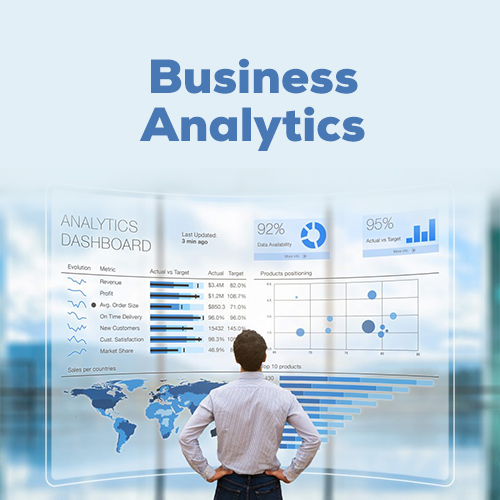
WHAT IS BUSINESS ANALYTICS?
A Definition of Business Analytics
Business Analytics (BA) refers to making practical, concrete decisions that are used by an organization to measure performance. Business Analytics consists of statistical and operational methods that can be applied to a specific project, process or product. Business analytics can also be used to evaluate business of the entire company.
Business Analytics is carried out to highlight necessary data that will help an organization prepare for future growth and identify weaknesses in existing processes.
Big Data: An Overview
Study in US Big Data can be described as large volume of structured and unstructured data that inundates a business on a day-to-day basis. The important thing to keep in mind about Big Data is that the amount of data will not play a vital role to an organization as the analytics that accompany it. An organization uses Business Analytics to get the insights required for making better business decisions and strategic moves by analysing Big Data they are using.
Benefits of Data-Driven Decision Making with Business Analytics
Data-driven decisions are made by the Companies by using Business Analytics (BA). Companies automate and optimize their business processes using the insight gained by BA. Companies now-a-days have a competitive advantage because they utilize data-driven Business Analytics.
Following insights can be used using BA:
• Conduct Data Mining
• Conduct statistical and quantitative analysis
• Multivariate testing
• Use predictive modelling and analytics to forecast future results
The Differences between Business Intelligence and Business Analytics
Business Intelligence (BI) and Business Analytics are similar, though there is a very thin line of difference between them. Business Intelligence is the process of gathering data from all sources and preparing it for Business Analytics. Business Intelligence is the first step which companies take when they need the ability to make data-driven decisions. The analysis of the answers provided by Business Intelligence is Business Analytics. Business Analytics answers why it happened and whether it will happen again and Business Intelligence answers what happened. Business Analytics, in contrast, includes statistical and quantitative analysis, data mining, predictive modelling, and multivariate testing while Business Intelligence includes reporting, automated monitoring and alerting, dashboards, scorecards, and ad hoc query.
Challenges with Business Analytics
- Business Analytics requires clear corporate strategy for integrating predictive models and buy-in from senior leader.
- To handle data and BA processes, technology infrastructure and tools are required.
- Need to know the difference between historical data for model development and real-time data in production. Also watch for technology infrastructure that restrict available data for historical modelling.
- In order to implement predictive models and adopt an agile approach, correct project management structure must be in place.
- Changes that BA brings to current business and technology operations, organization should be ready for it.
Business Analytics Best Practices
Implementing BA can’t be done overnight. But, if some best practices are followed, they can seek and become more competitive and successful. Following are some of the best practices:
- Draw an outline of your business use case and the goal ahead of time by knowing the objective of Business Analytics.
- Identify what success and failure means to you in terms of using Business Analytics
- Choose your own methodology and be sure you know the data in and out.
- Validate all the models which you will be using
- For being competitive and achieving success, Business Analytics is critical.
Mr. Akshay Bhandari
Counselor



